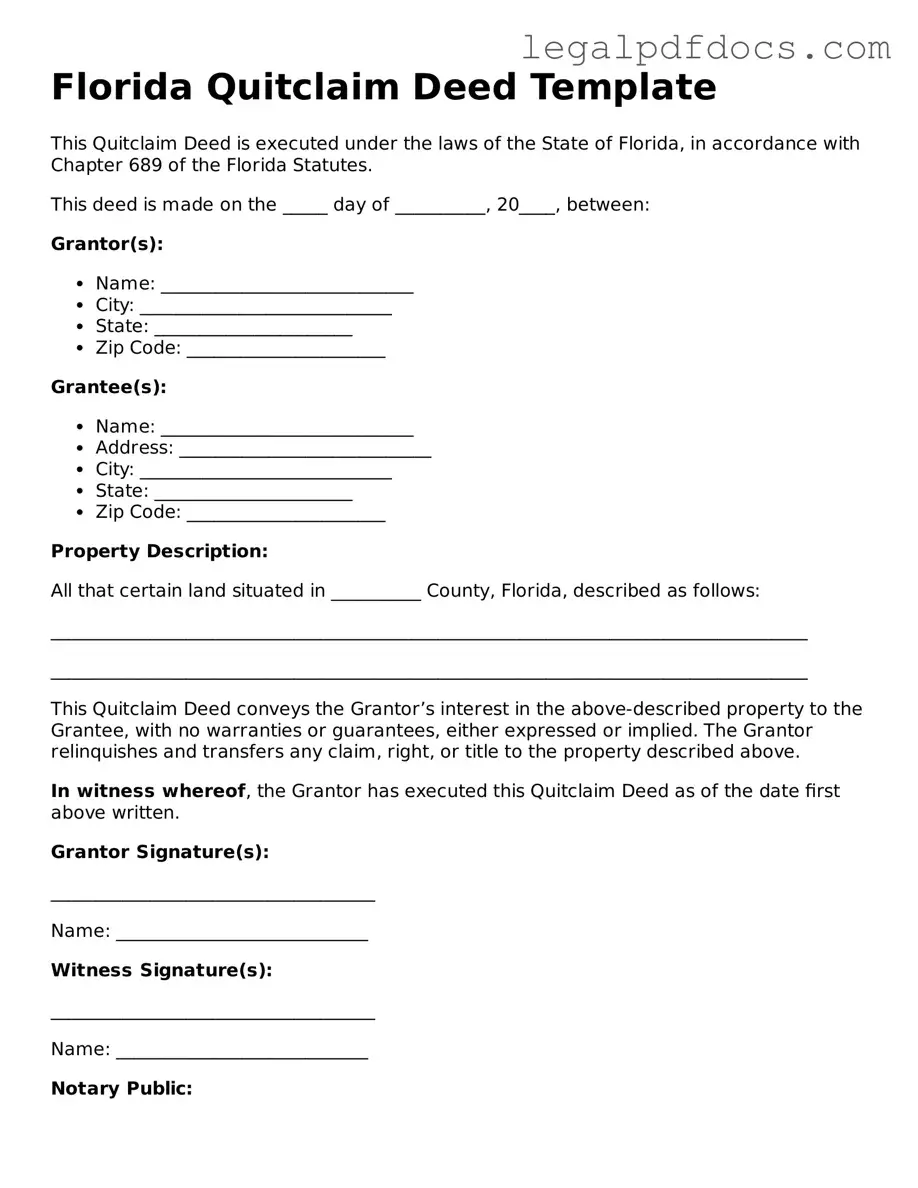In the realm of real estate transactions, the Florida Quitclaim Deed form serves as a crucial tool for property owners looking to transfer their interests in a property without the complexities often associated with other types of deeds. This form is particularly useful in situations where the transferor, or the person giving up their rights, may not be able to provide a guarantee regarding the title’s validity. For instance, it is commonly used among family members or in situations involving divorce settlements, where the parties wish to simplify the process of transferring property ownership. The Quitclaim Deed does not ensure that the property is free from liens or other claims, which means the recipient takes on the property “as is.” Understanding the essential elements of this form, including the necessary information about the parties involved, the property description, and the signatures required, is vital for anyone considering its use. Additionally, knowing when to utilize a Quitclaim Deed versus other deed types can help prevent potential disputes and ensure a smoother transfer process.
